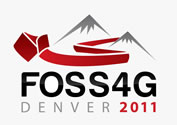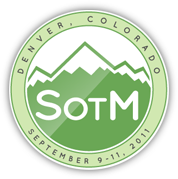Education, research and development in an institutional cooperation towards the establishment of an open source GIS platform
This study presents research and development outcomes and future plans of a collaboration program in GIS in Budapest, Hungary. Since 2004, Eötvös Loránd University, Faculty of Informatics grants home to a Geographic Information System educational module with the following courses: Introduction to Cartography, Geoinformatics, Spatial Databases, Remote Sensing Image Analysis, and GIS Application Development. This module has been completed by over 400 students to this date. In terms of education and research the University tightly cooperates with the Institute of Geodesy, Cartography and Remote Sensing. Students with interests in these fields may complete their professional practice in the Institute.
During lab seminars, students were working on many small scaled projects and have presented several theses and papers in Scientific Students’ Association. These works concern the full spectrum of GIS: from GPS tracking and navigation, 3D spatial modeling and display to spatial database development, web applications and services, and the fields of remote sensing, image segmentation and clustering, thematic classification, shape and texture recognition.
Research in this area also covers many fields, including the development of the university digital map server, document based spatial data storage, temporal properties of spatial data, data fusion methods on satellite images, knowledge-based automated raster-vector conversion of maps, image filter library development, segmentation and segment based evaluation of remotely sensed images.
Using this experience, plans of an open source geospatial information system have been outlined. Students are encouraged to participate in the development of this system with doing their thesis and professional practice. This system, titled AEGIS, is based on the .NET Framework. It realizes the centralized, document-based storage of raster and vector data (using MongoDB). It provides several means of accessing and editing data, including a fully functional desktop client, a lightweight interactive web client for editing data, a desktop and a web based browser to access published data, and also OGC standard web services. The system supports gathering data from online sources, including internal communication among AEGIS servers. Particular attention is given to user privileges, copyright and proprietary right management both for published and for remotely accessed and edited content.
One of the main goals of AEGIS is the management of temporal validity and other temporal properties of spatial data, providing the ability to trail the alteration of both raster (remotely sensed) and vector data in time. In this article we present the current status of this and earlier mentioned projects.
Graduated in 2009 at Eötvös Loránd University, Budapest. Currently carrying out PhD studies in computer science, in the field of geospatial databases.











